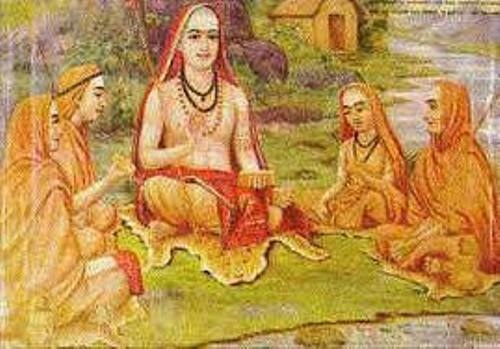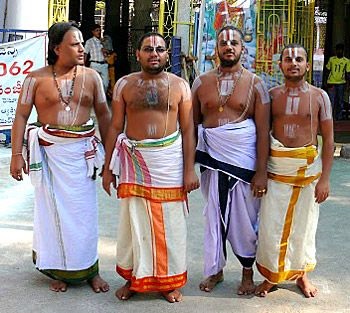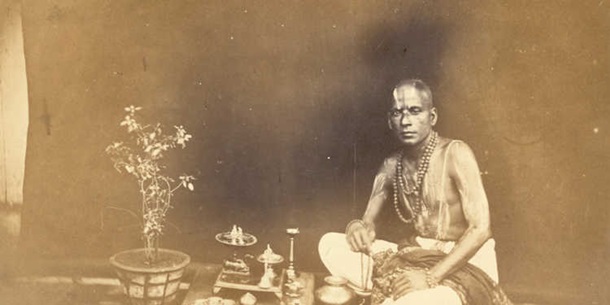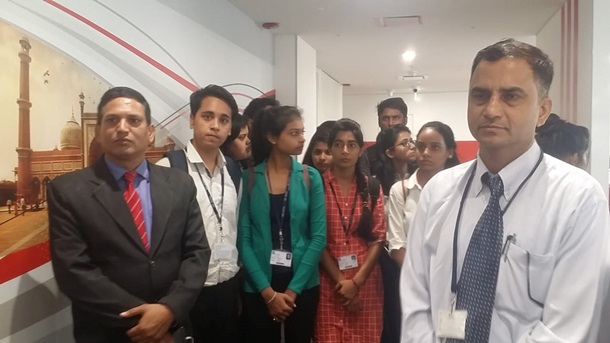Brahims are at the Highest Pedestal in The Great Indian Caste System and have been showing a path of Knowledge to the world for 7000 years.
By Prof (Dr) Ratnesh Dwivedi, South Asia Correspondent,Blue Aurora Media,London, Observatory Against Terrorist Threats and Jihadist Radicalization at INISEG and Contributor-The Korrespondent,Ukraine
Brahmin Mantra:
|| Lokaha Samastaha Sukhino Bhavanthu ||
(May the whole world be happy)
|| Sarve Jana Sukhino Bhavanthu ||
(May all people be happy)
|| Sarva Jeeva Janthu Sukhino Bhavanthu ||
(May all beings be happy)
"The wisdom of the ancients
has been taught by the philosophers of Greece, but also by people called Jews
in Syria, and by Brahmins in India."
-Megasthenes, Greek Ambassador to Gupta Empire
of India (now Afghanistan, Pakistan and Northern India), writing around 300 BC.

Introduction
In the ancient world and even in the modern
society people usually form cohesive groups based on their language, culture
and geographical location. These groups have a common ancestry and are led
by chiefs of the families around which they gathered. Such communities are
called . There are innumerable tribes in
this world. The Indian continent is not different from the rest of the
world as far as
tribes and the rivalries between them are concerned.
It seems there are two kinds of tribes in the
Indian continent, . The tribes are
still in the forests and hills and not really part of the modern
society. Castes have been living in the villages and cities since ancient
times and are civilized. In the Indian Continent, a caste means a modern
civilized tribe or clan or group of people that have marital relationship among
them. Some castes are further divided into subcastes. Matrimonial
relationship among subcastes is not acceptable due to differences in religious
and cultural practices. It is important to note that the caste or tribe is
blood-related and genetic, and hence hereditary. So, one has to be born
into a caste or tribe to belong to that tribe or caste. Again, this is not
unique to India. These ancient tribal traditions are slowly disappearing
in this modern One among such communities
in the Indian continent is the Brahmin caste. For consistency in this article,
Brahmins are referred to as a caste.
Brahmin Population
The census of 1881 enumerated 1,929
castes. Brahmins, Kunbis and Chamars accounted for approximately 10
million each. Of these 1,929 castes, 1,432 (74 per cent) were geographically
localized groups and each caste or tribe is unique to a particular place. Only
few castes like Brahmins had an all-India presence.
Brahmins are one of many minority groups in
India. In 1931, Brahmins were 4.32% of the total population. The so-called
Muslim minority in India is approximately 20 to 25 percent of the total
population, even after Muslim Pakistan and Muslim Bangladesh separated from
India. However, registered Muslim percentage is only ~15%, less than the real
percentage of the total population, due to misrepresentation. Brahmins
even in Uttar Pradesh, where they are most numerous, constitute just 9 percent.
In Tamil Nadu they form less than 3 percent and in Andhra Pradesh they are less
than 2 percent.

During the Islamic conquests in India, it was a
typical policy to single out the Brahmins for slaughter, after the Hindu
warriors had been bled to death on the battlefield. Even the Portuguese in
Malabar and Goa followed this policy in the 16th century, as can be deduced
from Hindu-Portuguese treaty clauses prohibiting the Portuguese from killing
Brahmins. ()
Geographical Location
Brahmins are Vedik people. The Vedas
describe the landscape of northern India, Pakistan and Afghanistan. Over and
over the Vedas mention a mighty river called the Sarasvati where Brahmin
communities flourished, where the Indus Valley civilization flourished and
dispersed when the Saraswati river dried up around 1900 BCE. Long before,
during the Ramayana period Brahmins migrated to Dandakaranya (Dandaka Forest)
in the south with Viswamitra, the author of several hymns in Rigveda including
Gayatri mantra, and practiced Vedik religon performing yajnas under the
protection of Lord Rama and Lakshmana. Long before Rama went
south, Agastya, a prominent Brahmin sage and writer of several hymns of
Rigveda, crossed Vindhyas and established Vedik religion in south
India. Sage Agastya appeared to Rama when he was despondent at the
impending war with Ravana and instructed him in the use of Aditya Hridayam, a
hymn praising the Sun God. Brahmins have been migrating to various regions
within the Indian Continent since time immemorial and recently to other
continents as well.

Meaning of “Brahmin”
The word Brahmin means many things to many
people resulting in confusion. One of the reasons for this confusion
is . Many words in
Sanskrit have . Depending upon
the context one has to take the meaning of the word. The word Brahmana (hereinafter
"Brahmin") means the God, one who knows God, one who has the
knowledge of God, one who has the knowledge of Vedas, an intellectual, a
priest, a teacher, a professor, a person belonging to Brahmin caste, a superior
person, a text related to Vedas, . Accordingly,
priests in a mosque, church, a synagogue, a gurudwara etc. are all
Brahmins because they are all , obviously, priests. They are also Brahmins
because they are supposed to have the knowledge of God. They are also
Brahmins because they are intellectuals. However, none of them are God and at
least a couple of them would consider it blesphemous to say so. They may
not have the knowledge of the Vedas and they may not belong to the Brahmin
caste. And certainly, they are not the texts related to Vedas. To add to
this confusion there are Boston Brahmins who are Americans and have nothing to
do with the Vedas or vegetarianism. They are not even remotely related to the
Indian Continent.
There are hundreds of religions, practices,
traditions, castes, tribes etc. dubbed as Hinduism. One among those religions
is the practiced by
the Brahmin caste. Brahmins have distinct traditions, culture and religion
and follow certain principles and practices. may also be
called Sanatana (ancient) Dharma or Vedic religion. However, there is a
lot of confusion as to the definition of , which encompasses
everything indigenous to the Indian Continent, e.g., some groups of
Indians like Busddhists, Jains, Sikhs, dalit Christians,
Muslims, and people like Iliah Kanche, a Kuruma Christian, confuse Brahminism
with Hinduism (Indigenous Religions of Indian Continent). Iliah Kanche declares
that he is not a Hindu, because he does not follow any of the principles of Brahmins
such as vegetarianism etc. However, Brahminism is only one of the many
religions of India that are collectively called Hinduism. Yet, almost all
other Indian (Hindu) religions also respect the Vedas because they are
essentially the human heritage and the most ancient texts. The Rig Veda was
declared by UNESCO as part of the world heritage.

Most of the practicing Brahmins adhere to
the principles such as acceptance of the Vedas with reverence; recognition of
the fact that the means or ways to salvation and realization of the truth are
diverse; God is one, but has innumerable names and forms to chant and worship
due to our varied perceptions, cultures and languages; that a Brahmin works for
the welfare of the entire society and so on. Daily practices of Brahmins
include sandhyavandana (prayers to Gayatri and Sun God),
prayer to ishtadaiva or ilavelpu (personal
God), yoga, non-violence, vegetarianism etc. Everything in the daily life of a
Brahmin is a ritual. However, special rituals include marriage, ritual
conception and consummation of the wedding, rituals of childbirth, naming
ceremony, first feeding ceremony, the child’s first tonsure, upanayana (the
sacred-thread ceremony - initiation into vedic learning and ritual), ritual
baths, cremation rituals, shraaddha, etc. All of these rituals
are very important for a practicing Brahmin.
The Vedas are the primary source of knowledge
for all Brahmin traditions, both orthodox & heterodox. All religions
of Brahmins and all traditions, in one way or other, take inspiration from the
Vedas. Traditional Brahmin accepts Vedas as apaurusheyam (not
man-made), but revealed truths and of eternal validity or relevance and hence
the Vedas are considered Srutis that which have been heard and
are the paramount source of Brahmin traditions and is believed to be
divine. These Srutis include not only the four Vedas (the
Rigveda, the Yajurveda, the Samaveda and the Atharvaveda), but also their
respective Brahmanas. Brahmins also give tremendous importance
to purity of body and mind and hence attach importance to ritual baths and
cleanliness.
Рубрика "Блоги читачів" є майданчиком вільної журналістики та не модерується редакцією. Користувачі самостійно завантажують свої матеріали на сайт. Редакція не поділяє позицію блогерів та не відповідає за достовірність викладених ними фактів.